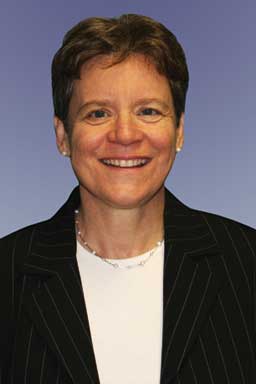From the Executive Editor: Outcome mapping and a foot in two continents (Nov 2010)
Outcome mapping is a progress measurement system to evaluate behavioral changes made in response to a project in a developing country.1 It is a formal process used to gather information about people who interacted directly with a research team and others living in the community. The outcome mapping system is based on a repeating cycle of record keeping, data analyses, evaluation, and adjusting the inputs, followed by another complete cycle. Although I am new to outcome mapping, the fundamental concepts remind me of herd health. It is also a cycle of evaluating herd records, visiting the herd, working with the producers, determining the health of the pigs, making recommendations, and then repeating the cycle on a routine basis. I wonder, though, how often do we stop to measure the behavior changes of all of the people on the farm? Do we stop to ask the question “What have you done in response to my working relationship with you?” Perhaps we know what the herd manager does. Do we know what all of the staff do? I remember working with a herd that had too many post-castration problems. I described the problem to the herd owner and asked him to change his method. I was frustrated when nothing changed – that is, until I learned the castration was being done by his young teenage son. My message was not being transmitted from father to son. I needed to meet with his son to effect real change.
We have been following a similar process in the longitudinal research project in Western Kenya. Farms were visited three times over a 1-year period. After the first and last farm visits, we held farmer training workshops. During the farm visits, we provided one-on-one training to the farmers, teaching them about pig management and the Taenia solium tapeworm. The life cycle of the parasite is confusing because the adult worm lives in people, but the larval stage lives in pigs. It becomes even more confusing because a person eating an egg may develop epilepsy, but a person eating infected pork ends up with a tapeworm. During each farm visit, we interviewed the farmer to determine whether or not he or she knew how people and pigs became infected. We hoped that through this education, the prevalence of epilepsy and tapeworm in people would be reduced. Our research showed that farmers who attended the workshops were more likely to understand the life cycle of T solium than farmers who did not attend the workshop.2 Even better, farmers who were given one-on-one training were more able to describe the life cycle than those who only attended the workshop. Unfortunately, most farmers did not pass the information on to the other family members.
Although knowing whether the farmer could describe the life cycle of the tapeworm is interesting, a more important outcome measure is behavior change. In May, I returned to Kenya to determine, using the outcome mapping process, what behavior changes were adopted by these farmers. We began with this open ended question: “What are you doing differently now because of workshops and research?” All farmers who participated had made at least one change. Some people formed farmer groups where they taught one another the information from the workshops. Some farmer groups were cooperatives where they purchased a sow together and then shared the cost of the feed. The incentive was that each farmer then received a weaned pig. Most farmers were feeding and watering their pigs more frequently and providing protein. To keep pigs away from human feces, farmers were either tethering their pigs or putting them in a barn. To prevent infections in people, women were boiling pork for 20 minutes before frying it, and many farmers bought pork only from a butcher, because then it was government inspected. The most remarkable part is that it had been 2 years since we had worked with these farmers. A full 2 years after our last workshop, the farmers were still implementing these changes. The frustrating part is that farmers who did not attend workshops or participate in the research have made no changes. At first I was very bothered by this, but then I realized that in Canada, I would also not expect a farmer to adopt a management change just because I taught his neighbor something new.
Using this outcome mapping process to measure behavior changes in response to our work in Kenya was very rewarding. I think the same would be true with our herd-health clients. Asking the question of the farm workers “What are you doing differently now as a direct response to the veterinary visits?” may help us all to celebrate our successes.
References
1. Earl S, Carden F, Smutylo T. Outcome Mapping. Ottawa, Ontario, Canada: International Development Research Centre; 2001:1–16. Available at www.idrc.ca. Accessed 25 September 2010.
2. Wohlgemut J, Dewey C, Levy M, Mutua F. Evaluating the efficacy of teaching methods used to convey information to farmers in Western Kenya about the prevention of neurocysticercosis due to Taenia solium. Am J Trop Med Hyg. 2010;82:634–642.
–Cate Dewey, DVM, MSc, PhD
